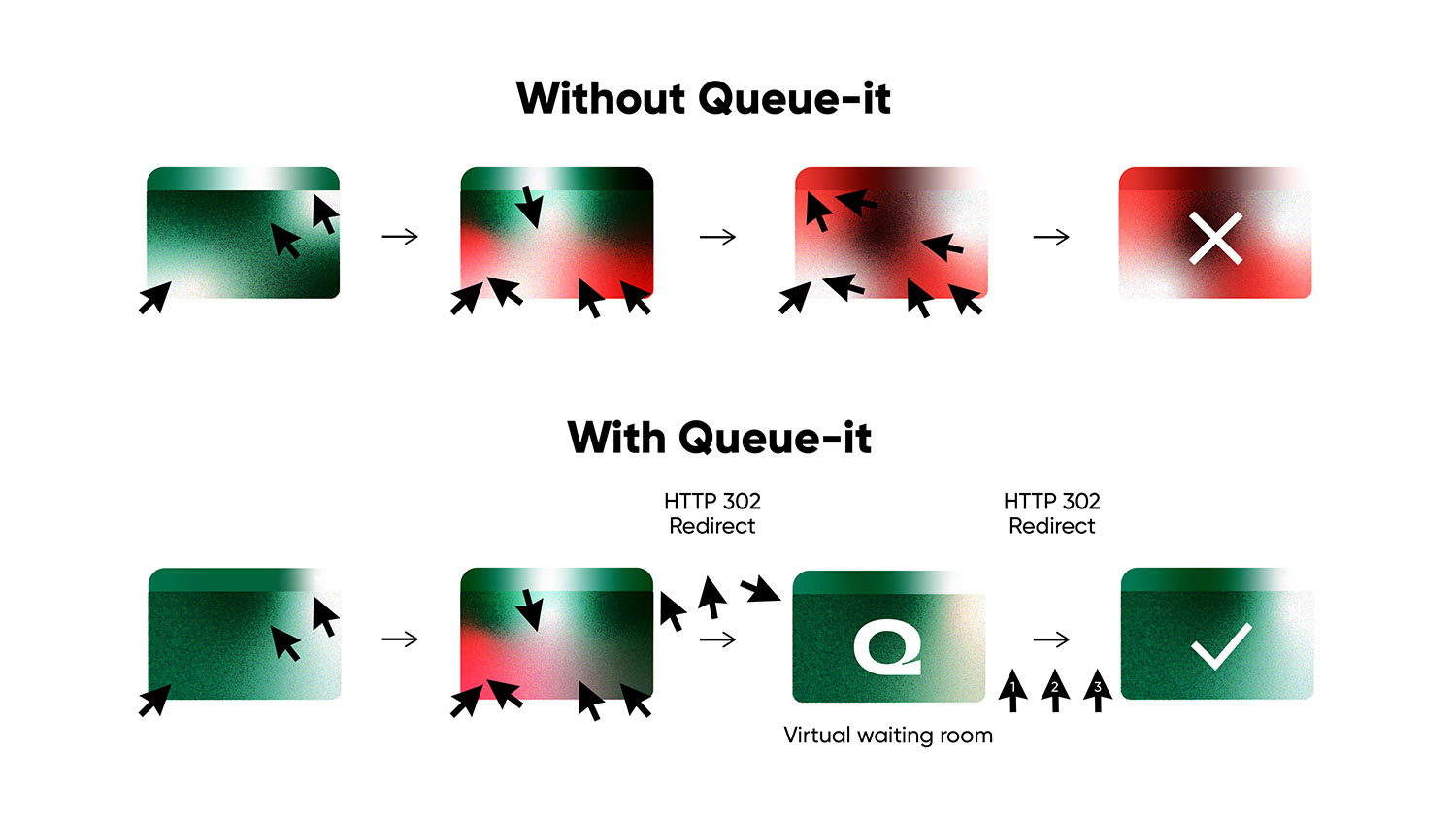SEASONAL SALES & FLASH SALES
Shopping holidays like Black Friday & Cyber Monday are the backbone of online retail, driving big sales and even bigger online traffic. Avoid ecommerce website crashes & block bots on your biggest days with a controlled, fair & seamless sales experience.

91%
of enterprises report downtime costs exceeding $300,000 per hour
92%
of customers will abandon a brand they love after just two to three negative experiences
46%
of shoppers will stop shopping with a retailer after a Black Friday website crash

- In peak situations customers will be sent to your branded waiting room with an HTTP 302 redirect
- While in the waiting room visitors are on Queue-it's infrastructure & see clear wait information
- Once it's their turn they're flowed back to your site with another HTTP 302 redirect & have a secure token confirming they've been through the queue

- Run truly exclusive sales that grant access only to identified & verified visitors
- Keep bad bots & resellers out simply by not giving them an invite
- Incentivize loyalty program sign-ups with early or exclusive access

- Prevent Black Friday website crashes from bot-driven spikes & give other bot tools more time to identify malicious behavior
- Add a security checkpoint to your flow so you can slow down bots & run security checks like Proof-of-Work challenges or data center hard blocking
- Get automatic threat detection & real-time alerts on unusual traffic behavior




85%
of customers sell through product more efficiently with Queue-it
84%
say their customers' online experience has improved after using Queue-it
33%
is the average database scaling savings with Queue-it in place
* Based on 214 survey responses from Queue-it customers (2023 & 2024). See the results.
- Black Friday
- Cyber Monday
- Singles' Day
- Click Frenzy
- Summer sales
- Flash sales

Resource
Black Friday guide: Hidden risks of web traffic overload
Read more












